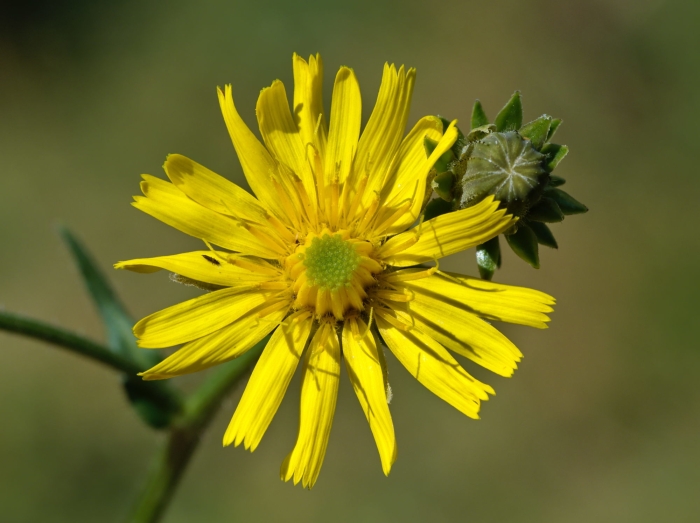Hawkweed Oxtongue
(Picris hieracioides)
Hawkweed Oxtongue (Picris hieracioides)
/
/

Gilles San Martin
CC BY-SA 4.0
Image By:
Gilles San Martin
Recorded By:
Copyright:
CC BY-SA 4.0
Copyright Notice:
Photo by: Gilles San Martin | License Type: CC BY-SA 4.0 | License URL: http://creativecommons.org/licenses/by-sa/4.0/ | Rights Holder: Gilles San Martin | Publisher: iNaturalist | Date Created: 2020-08-30T12:44:08-07:00 |



















Estimated Native Range
Summary
Picris hieracioides, commonly known as hawkweed oxtongue, is a biennial or short-lived perennial herb native to a wide range of habitats including grasslands, roadsides, and open woodlands across Europe and parts of Asia. It typically grows to a height of 30-100 cm (12-39 inches), with a rosette of basal leaves and erect, branched stems. The leaves are hairy, and the upper stem leaves clasp the stem with auricles. Hawkweed oxtongue blooms from June to September, producing clusters of yellow, dandelion-like flowers that are moderately showy. The plant is known for its bristly appearance, with stiff hairs covering the stems and leaves.
Hawkweed oxtongue is not commonly cultivated but may be found in wildflower meadows or naturalistic plantings. It is valued for its ability to thrive in poor soils and its drought tolerance once established. In cultivation, it prefers full sun to part shade and can tolerate a range of soil types, provided they are well-drained. While not a typical garden plant, it can be used to add texture and interest in informal settings. However, gardeners should be cautious as it can become weedy and potentially invasive outside its native range, particularly in North America and Australia.CC BY-SA 4.0
Hawkweed oxtongue is not commonly cultivated but may be found in wildflower meadows or naturalistic plantings. It is valued for its ability to thrive in poor soils and its drought tolerance once established. In cultivation, it prefers full sun to part shade and can tolerate a range of soil types, provided they are well-drained. While not a typical garden plant, it can be used to add texture and interest in informal settings. However, gardeners should be cautious as it can become weedy and potentially invasive outside its native range, particularly in North America and Australia.CC BY-SA 4.0
Plant Description
- Plant Type: Herb
- Height: 1.5-2.5 feet
- Width: 0.5-1 feet
- Growth Rate: Moderate
- Flower Color: Yellow
- Flowering Season: Summer, Fall
- Leaf Retention: Semi-deciduous
Growth Requirements
- Sun: Full Sun
- Water: Medium
- Drainage: Medium
Common Uses
Border Plant, Low Maintenance
Natural Habitat
Native to grasslands, roadsides, and open woodlands across Europe and parts of Asia
Other Names
Common Names: Hawkweed Oxtongue, Bristly Hawkweed, Bristly Ox-tongue
Scientific Names: , Picris hieracioides, Hieracium muricellum subsp. muricellum, Picris crepioides, Picris hieraciifolia, Picris hieracioides subsp. mayebarae, Picris hieracioides var. akaishiensis, Picris hieracioides var. alpina, Picris hieracioides var. dentata, Picris hieracioides var. glabrata
GBIF Accepted Name: